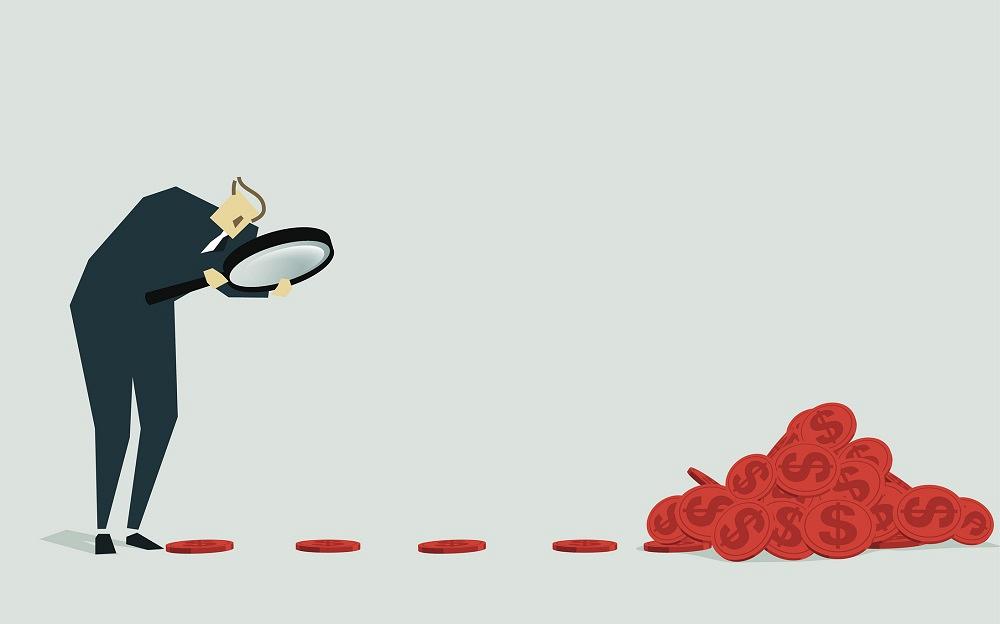CFO
- FMA
- The Fabricator
- FABTECH
- Canadian Metalworking
Categories
- Additive Manufacturing
- Aluminum Welding
- Arc Welding
- Assembly and Joining
- Automation and Robotics
- Bending and Forming
- Consumables
- Cutting and Weld Prep
- Electric Vehicles
- En Español
- Finishing
- Hydroforming
- Laser Cutting
- Laser Welding
- Machining
- Manufacturing Software
- Materials Handling
- Metals/Materials
- Oxyfuel Cutting
- Plasma Cutting
- Power Tools
- Punching and Other Holemaking
- Roll Forming
- Safety
- Sawing
- Shearing
- Shop Management
- Testing and Measuring
- Tube and Pipe Fabrication
- Tube and Pipe Production
- Waterjet Cutting
Industry Directory
Webcasts
Podcasts
FAB 40
Advertise
Subscribe
Account Login
Search
Supplier financial health check, Part I: Manufacturers must be careful during COVID-19 crisis
There are research and information-gathering options for product manufacturing companies
- By Jon Olson
- May 29, 2020
- Article
- Shop Management

Being confident in a suppliers’ stability during the COVID-19 pandemic needs to be more than a gut-check for product manufacturers. Companies will need to dig in and conduct their due diligence to understand a suppliers’ financial health and ensure it will be there when needed. Getty Images
Editor’s Note: This is the first edition of a 3-part series. Part II from Steve Schabel of Alexandria Industries will discuss other key criteria manufacturers can look for in their suppliers to determine business health.
COVID-19 has exposed weak links in the global supply chain, and product manufacturers are taking notice. As the virus runs its course, many manufacturers will likely have suppliers that do not survive.
Being confident in your suppliers’ stability needs to be more than a gut-check today. You will need to dig in and conduct your due diligence to understand your suppliers’ financial health and ensure they will be there when you need them.
Do Your Research
When you partner with a new supplier—or evaluate an existing one—you need to examine two key criteria:
1. Business history: Conduct your own online research, including the supplier’s website, to determine if the company has a history of reducing its workforce, eliminating or adding services, selling subsidiary businesses or production lines, or engaging in mergers or acquisitions. Uncovering this type of information about investments, divestments, and returns can help you gauge a supplier’s overall business health.
Set up a Google Alert to monitor the internet for content about your suppliers. Receiving timely information and news about them will allow you to be aware of any significant business changes.
2. Credit history: Use such online resources as Dun & Bradstreet to research a company’s financial history, even privately held companies, including credit score, business revenue, sales volume, and value of assets. These resources also offer ownership information, bankruptcies, and payment history down to the average days paid late. Too many red flags may indicate instability.
If your supplier is publicly traded, check its website, as it is required legally to share its financial balance sheets. Here you can assess financial trends year-over-year or identify significant drops in revenue or other major business activities. You also might want to read the annual report and letter to shareholders for additional insight into the business’s current situation and future strategic plans. Public companies also host quarterly investor conference calls that let you hear comments directly from the company’s CEO and CFO.
Ask Questions
Sometimes the best way to get useful information is to ask the supplier directly. Questions like these will help you judge a supplier’s financial health:
- How diverse is your market base? It’s important to understand your supplier’s market diversity, or lack thereof, as this can affect long-term stability. If the supplier serves diverse markets for its business revenue, when one industry is down, others can carry the supplier through. In contrast, for a single-market supplier to automotive, when the market is down, so is the supplier. Will the supplier be able to survive the downturn and open its business when the market returns? Or will you need to shop for a new supplier?
- Do you have sufficient working capital and access to liquidity? Banks are being more discerning with loan applicants in today’s bumpy economy. Now more than ever, lenders are digging deeper into their customers’ financial health. Financially risky companies may not get the financing they need to grow and prosper; financially strong suppliers will have greater access and better terms for financing, enabling them to continue to get stronger. The supplier may not be open to sharing this information, but it’s important to ask the question anyway.
- What are your plans for capital investments this year and next year? Companies that invest in themselves, even during difficult economic times, show resiliency and confidence in their abilities to grow and prosper.
- Is your company an “essential business” during the COVID-19 pandemic? Being able to serve customers during times of crisis, such as the recent government lockdown, could factor into a supplier’s longevity. If the supplier is not an essential business and is required to shut down, it may not be able to withstand the financial burden. Keep in mind that what determines if a business is essential can change depending on the situation.
- Have you received governmental financial support during the pandemic, such as small-business loans and Paycheck Protection Program funds? If so, in what ways could the economic relief affect the business in the short or long term? This type of financial support can be telling about a business’s longevity.
Monitor Suppliers Regularly
For most organizations, things will change after COVID-19. Whether a supplier is selling off product lines to free up cash or expanding its footprint or services to open capacities, it will need to adjust to a fluctuating manufacturing environment. What you see today can change tomorrow. For this reason, consider monitoring your suppliers on a regular basis.
Red flags that could indicate unnerving business changes include a pattern of layoffs, selling equipment, few or no job openings, or selling product lines. On the other hand, news about new products or services, leadership additions to staff, or facility and equipment upgrades indicates business growth and financial health.
With the chaotic impact of COVID-19 on our economy, suppliers will make strategic moves that may be difficult to understand from an outside perspective. If a supplier shows a red flag, be sure you understand why. You may learn an unexpected decision makes good sense for the supplier to remain financially sound. And remember that many suppliers will take a financial hit during the COVID-19 pandemic, so you don’t want to overreact either.
Seek Financially Healthy Suppliers
When was the last time your organization worked through a pandemic? COVID-19 has OEMs taking a hard look at their supply chain to understand what the soon-to-be new normal in manufacturing looks like.
During critical times, those suppliers that exhibit resiliency, tenacity, and the ability to flex with negative impacts on needed resources will come out better than their competition. They will not only survive the bad times but will thrive because of them.
Continue achieving your business success by doing your due diligence to understand on a deeper level the suppliers you choose to work with. True understanding of and confidence in your suppliers’ stability is more than a gut-check.
About the Author
subscribe now

The Fabricator is North America's leading magazine for the metal forming and fabricating industry. The magazine delivers the news, technical articles, and case histories that enable fabricators to do their jobs more efficiently. The Fabricator has served the industry since 1970.
start your free subscription- Stay connected from anywhere

Easily access valuable industry resources now with full access to the digital edition of The Fabricator.

Easily access valuable industry resources now with full access to the digital edition of The Welder.

Easily access valuable industry resources now with full access to the digital edition of The Tube and Pipe Journal.
- Podcasting
- Podcast:
- The Fabricator Podcast
- Published:
- 04/16/2024
- Running Time:
- 63:29
In this episode of The Fabricator Podcast, Caleb Chamberlain, co-founder and CEO of OSH Cut, discusses his company’s...
- Trending Articles
AI, machine learning, and the future of metal fabrication

Employee ownership: The best way to ensure engagement

Dynamic Metal blossoms with each passing year

Steel industry reacts to Nucor’s new weekly published HRC price

Metal fabrication management: A guide for new supervisors

- Industry Events
16th Annual Safety Conference
- April 30 - May 1, 2024
- Elgin,
Pipe and Tube Conference
- May 21 - 22, 2024
- Omaha, NE
World-Class Roll Forming Workshop
- June 5 - 6, 2024
- Louisville, KY
Advanced Laser Application Workshop
- June 25 - 27, 2024
- Novi, MI



























